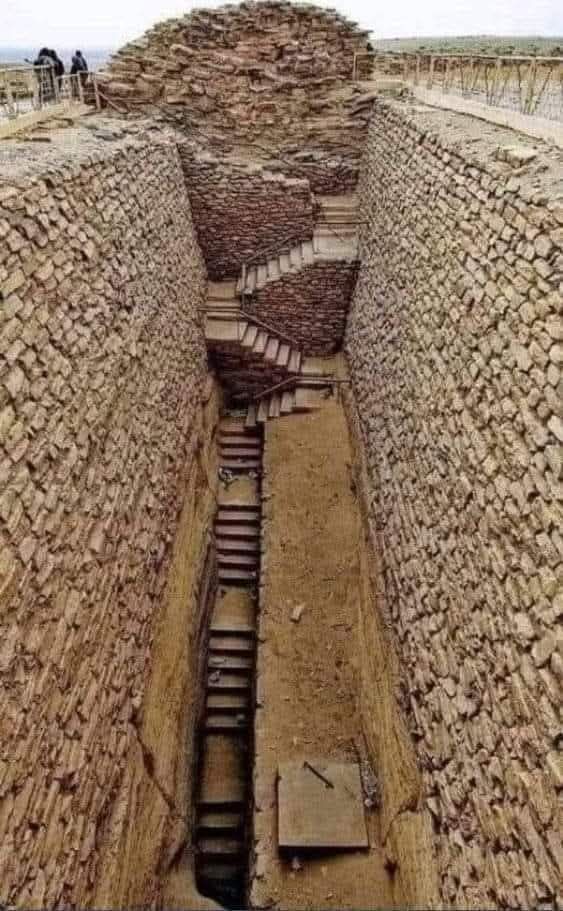Many years ago, in 1924, in the desert of Egypt, the renowned British archaeologist James Quibell had the incredible fortune of makng a discovery that shocked the world of archaeology…..
.
A staircase leading to the southern tomb of Pharaoh Djoser, located in Saqqara, has proven to be a key piece in understanding the history of this ancient civilization.
This staircase is approximately 4,800 years old, making it one of the oldest structures ever found in Egypt. Made of limestone, it is approximately 28 meters long and consists of wide, solid steps. This building is notble not only for its timing, but also for its purpose.
The staircase leads to the southern tomb of Pharaoh Djoser, an important historical figure in ancient Egypt. Djoser ruled during the third dynasty of the Ancient Egyptian Empire, around 2680 BC. C. to 2640 BC. C. him He is known for his important contribution to funerary architecture, having commissioned the construction of the famous pyramid of Djoser, also called the Pyramid of the Steps. This pyramid represents a transition in Egyptian architecture, marking the beginning of the pyramid era.
The discovery of the staircase not only sheds light on the ingenuity and skill of ancient Egyptian builders, but also offers valuable insights into the cult of the pharaohs and the religious beliefs of the time. It is a true window into the past that helps us understand Egypt’s rich history and culture. This archaeological discovery, made by James Quibell in 1924, is still a source of fascination and admiration for ancient history scholars and enthusiasts around the world.
.
Daily Factfinder
